Even for introverts like me, I still need my social interaction every once and a while! Nowadays, it’s so easy to be socially connected with faster modes of transportation, to phone calls, and even social media (which does have its pros and cons).
Whether we’re maintaining social connection and interactions through cafe meetups or through instagram, there are a couple of common themes and elements which can be observed through these different modes of social interaction.
In this chapter overview, we’ll go over some of the common tenets and elements involving social interactions. Let’s get started!
Social Interaction on the MCAT: What You Need to Know
Topics on language and memory will be tested on the Psych/Soc section of the MCAT and can appear both as passage based and fundamental discrete questions.
Here at MCAT Mastery, we’ve calculated that you can expect about 3-4 questions concerning social interaction to appear on the MCAT!
Introductory psychology accounts for 65% of the content covered in the Psychological, Social, and Biological Foundations of Behavior while introductory sociology covers about 30 of the content.
Important Sub-Topics: Social Interaction
Try to match or align the review of this chapter overview and subsequent articles with the chapter overview and articles dealing with social structure and stratification!
You’ll see that this article is a more microscopic view of socialization as it deals with specific social interactions while the social structure and stratification is more of a macroscale view of sociology!
1. Important Components of Social Interaction
One way to view social interactions is kinda like a team! Within each team, there’s several different players each with a different position and role which then come together to keep the team performing at the highest level! While this is a relatively simplistic way to view social interaction, it has some applications!
As the term suggests, a role simply defines the behaviors and responsibilities that a person must fulfill as they play a part in that role. A person may have multiple different roles in their lives as a part of society. A mom for example may have multiple roles as a working doctor, a wife, and of course a mom!
These roles, however, have problems from time to time. Role strain occurs when the demand of ONE role becomes very burdensome such as when the doctor works multiple late shifts. Role conflict can occur when the demands of one role interferes with another such as when the late shifts makes her unable to see her daughter's performance as a mom.
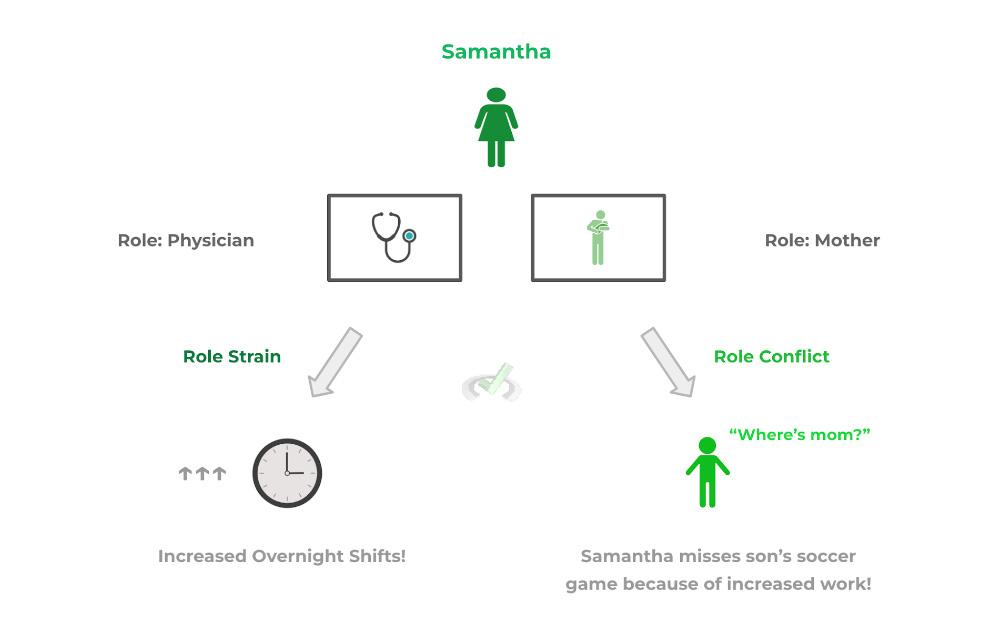
A similar, related term is status which refers to one’s hierarchical position in society. While this is an unfortunate pattern common in socialization, it does exist historically way back to the dawn of civilization and is a crucial component in many societies today.
Oftentimes, certain roles are found in certain statuses and usually refer to a person’s role as a contributing worker in society. For example, a senator of the U.S. would probably have a higher status then someone working at a bakery.
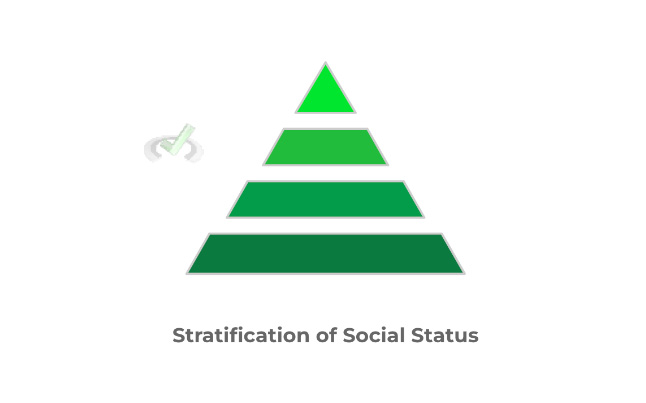
Additionally, 2 other crucial components of socialization are groups and networks – though they seem similar on face value, they each have distinct differences despite them referring to an organization of multiple people.
The main idea about groups is that the individuals involved have some sort of camaraderie and unity with one another! These can include a family, a fan base for a sports team, an orchestra, etc. The main idea is that there’s some sort of common thing unifying each other!

When you think of a network, think something a lot more broad and think about the phrase “making connections”. A network refers to the wide group of people that we interact and have social ties to.
The big differentiating point between a group and a network is that groups are more bound because of a common thing they all have with one another while networks are simply the social ties you have with other people — these ties can be strong such as those with family members or more superficial such as one with a mailman.
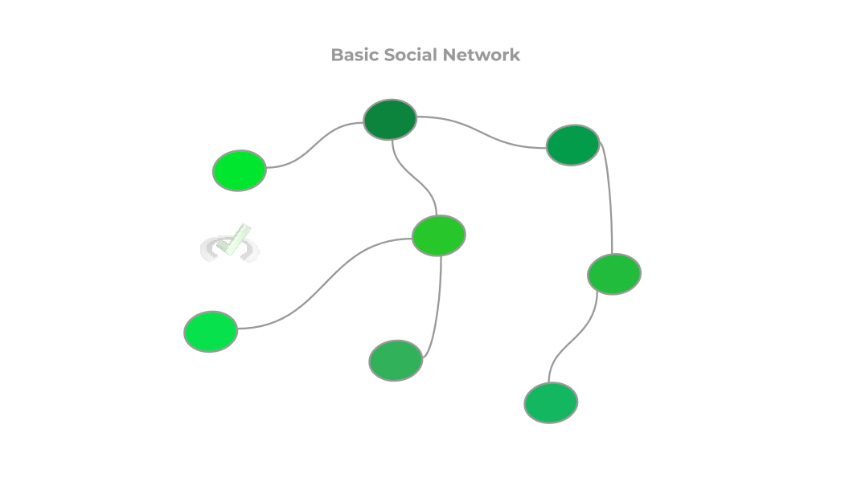
Full Study Notes : Important Components of Social Interaction on the MCAT
For more in-depth content review on the elements and components of socialization, check out these detailed lesson notes created by top MCAT scorers.
2. Agents of Socialization
Probably when you first heard the phrase “agents of socialization”, you probably thought of the people you usually see, talk and hang out with on a regular basis such as your family, your groups of friends, teachers, etc. However, agents of socialization can take on many different forms as small as an individual friend or as big as a school institution!
To put it more formally, agents of socialization refers to any entity that we interact with on a regular basis. This can be through your interaction with people in real life such as friends at school or teammates during practice, but also extends online with the consumption of mass media through apps, TV, news, etc.

The various agents that we interact with aren’t just important just for the sake of socialization, but because they also are involved in affecting the norms and behaviors that we follow!
If this kinda rings a bell, it should! We discuss in a little more detail how the presence of others and different environments can affect one’s behavior as discussed more in our “Social Processes and Behavior on the MCAT!” chapter overview!
Ideas on conformity, establishing accepted normative behavior, etc., all stem from the various agents of socialization that we interact with!
Full Study Notes : Agents of Socialization on the MCAT
For more in-depth content review on agents of socialization, check out these detailed lesson notes created by top MCAT scorers.
3. Role of Communication
Socialization and communication go hand in hand like yin and yang: simply put, one can’t exist with the other. Socialization relies on the ability of individuals to relay information to one another efficiently through communication!
In normal socialization, communication can be verbal and nonverbal. While we usually think of verbal communication as one that’s vocal, it can also entail communication that’s written, displayed, and hand signed for ASL!
Nonverbal communication, as you’d assume, is the relaying of information that extends outside of simply displayed and written communication and often involves understanding how body language, tone, emotion, and the context of a conversation influence the meaning of an intended message. Take a look at the examples below!
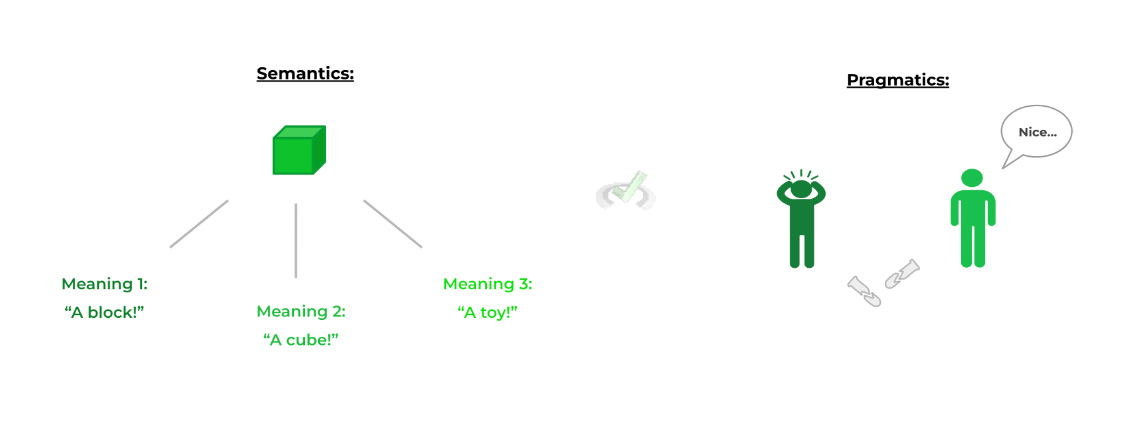
You might recognize this figure if you’ve covered our “Language Development on the MCAT!” chapter overview. Here, it might be helpful to associate semantics more with verbal communication and pragmatics more with nonverbal communication.
Full Study Notes : Role of Communication on the MCAT
For more in-depth content review on the better understanding of the role and different types of communication, check out these detailed lesson notes created by top MCAT scorers.
4. Main Theories of Socialization
While most of the time socialization allows for people to conform to the norms established by society, there are cases where disruption in socialization can result in deviance from these social norms. We’ll go ahead and cover 2 main sociological theories that have been proposed to explain deviance.
The differential association theory attributes the deviant behavior of an individual due to the learning and interaction of the individual with others that also participate in this deviant behavior. In more common words, it’s really the “monkey see, monkey do” or “hanging around the wrong people” phrase.
An important facet of the differential association theory is that the individual must develop an intimate relationship with the peers that engage in deviant behavior with that group becoming a component of their identity.
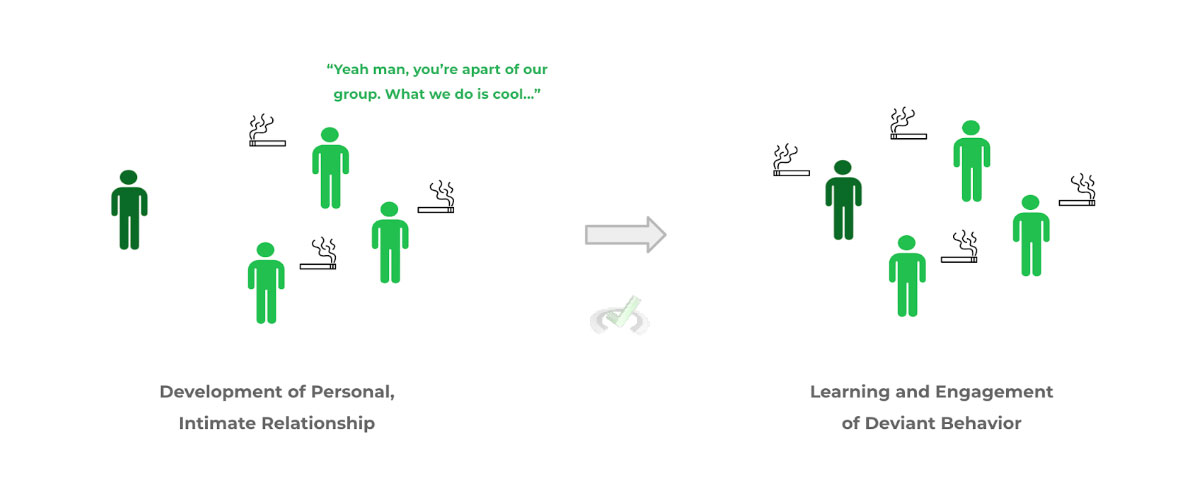
It’s usually not enough for the individual to be exposed to the behavior through venues like mass media. This explains why even though a lot of people watch violent shows and movies, most don’t engage in that violent behavior — differential association theory requires an intimate relationship to be built.
Another popular theory to explain the emergence of deviant behavior is strain theory: this states that individuals engage in deviant behavior because they are unable to attain set goals because of established social constraints and inequalities. This is much better understood through an example.
Suppose an individual from a lower socioeconomic class wants to do well on his AP Calculus exam. His school, however, is fairly low funded in regards to AP prep and high quality, personalized SAT tutors aren’t within his budget as they can only be afforded by richer families for their kids.
In order to do well on his AP Calculus exam, he decides to cheat by hiding cheat notes within his sleeve and inputting various important equations on his scientific calculator. As shown here, the unequal footing in regards to his exam prep causes the student to engage in deviant behavior!
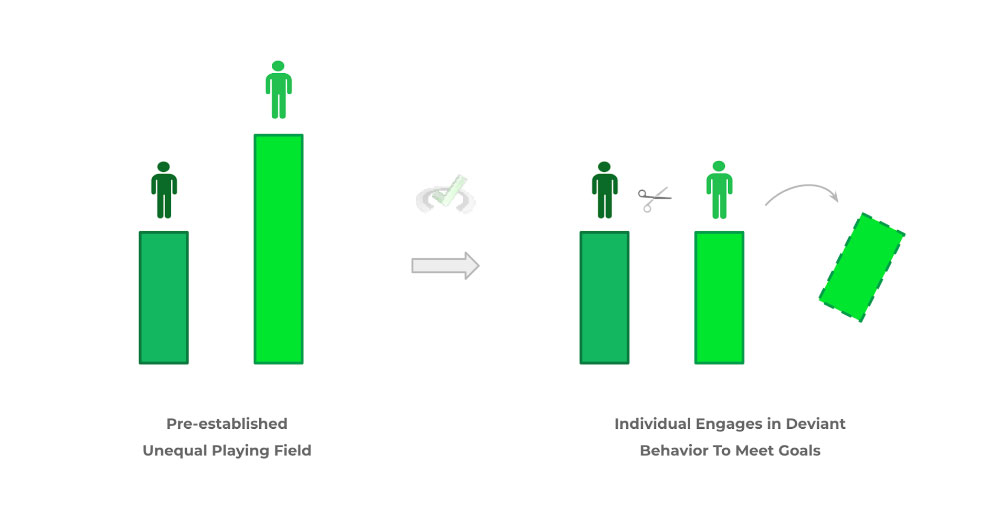
Full Study Notes : Main Theories of Socialization on the MCAT
For more in-depth content review on the different theories regarding deviance in socialization, check out these detailed lesson notes created by top MCAT scorers.
Important Definitions and Key Terms
Below are some high yield definitions and key terms to refer to when reviewing concepts and ideas about social interaction!
Term | Definition |
|---|---|
Role | Defined as the behaviors and responsibilities that a person partakes in as a contributing member to society |
Status | One’s hierarchical position in society often based of what role(s) an individual has |
Role Strain | Occurs when the responsibilities of one role becomes too overbearing and demanding |
Role Conflict | Occurs when the responsibilities of one role interferes with the responsibilities of another role |
Group | A collection of people unified through a common goal or similarity that each member possesses |
Network | The interconnected web of people we interact with; social ties to individuals may vary with some social ties being very strong and other being superficial |
Agents of Socialization | The various amounts of entities that we interact and socialize with; these agents can be in person or online and can be as direct as individual people or larger institution |
Communication | The ability to convey and deliver information to others in an efficient, understandable manner |
Differential Association Theory | Theory of social deviation which states that deviant behavior is acquired through learning and interaction with other individuals participating in deviant behavior |
Strain Theory | Theory of social deviance which states that deviant behavior occurs due to the inability of one to attain goals as a result of pre-existing inequalities |







 To help you achieve your goal MCAT score, we take turns hosting these
To help you achieve your goal MCAT score, we take turns hosting these 





















 reviews on TrustPilot
reviews on TrustPilot